The first men in Europe, the Neanderthals, had a rough day at the office killing giant rodeo bulls with hand-held spears. You see, they could not throw, the weapon, so they stayed close and got 51% of their diet from the auroch, a great beast which they fought at close quarters. The aurochs never won but the Neanderthals eventually had to fight men with atlatl’s and domesticated wolves. But, it seems, that something of that Neanderthal tenacity, that ability to stand in their close against something big enough to crush you, echoed down through the ages in Europe, for all of the best spearmen save one tribe—the Zulu—have come from Europe:
Achilles and his Myrmidons harried the Trojans behind their walls with their spears.
The Greeks would conquer from Italy to India with the spear.
The Romans would conquer the spear with the javelin and sword, but then fail to stand before the Asiatic and Germanic horseman the Greeks had scattered on the wind, and horsemen reigned again over the spear [with the lance born of and cousin to it] for a thousand years from Adrianople in 392 to Flanders in 1310 when a bunch of Flemish merchants speared French knights from the saddle and at Stamford Bridge when Scottish pikemen stopped the English horsemen. The English would soon dismount their knights in France against the French and win 3 great victories in the Hundred Years War, even as Swiss pikemen, men discarding the shield altogether for a 21 foot sear, became the preeminent mercenaries in Europe, until one disastrous battle in which they were enfiladed in a ditch by musketeers and the Swiss retired to neutrality. Even then, the memory of Swiss pikemen standing against terrible odds, has landed them a continued role as papal guardsmen to this day.
The mature use of pike in early modern times was to pair a pikeman up with a musketeer, the musketeer shooting at long rage, the pikemen keeping the horses off at a few horse-lengths, and the musketeer with his famous rapier, skewering unhorsed cavaliers and savage light infantry who might menace the pikeman at close range. By the 1700s, these two weapons had been combined into the socketed bayonet, which made every man a musketeer and a pikeman.
The social conditions necessary to bring about the pike man, or man with the long spear, are agricultural organization.
The social mechanism that brings about the horse warrior are nomadism and feudalism, which is a means of applying ancient Аrуаn nomadism to agricultural economics.
The social mechanism that brings about the swordsman is an ethic of close combat, found in barbarian settings such as among the Gallic, Norse and Scots and in the civilizations of the Hittites, the Romans and the British, very often supported by nautical warfare, for the sword is the best all-around weapon on a pitching deck at sea. A dueling ethos is essential to this and the horse culture cultivates this, as it did among the Romans, as an antidote to the spearman.
Socially:
Spearmen are socialists
Horsemen are oligarchs
Swordsmen are libertarians
Interestingly, in terms of means, we have a combat dichotomy such as Frazier can beat Ali and Foreman crushes Frazier, but Ali beats Foreman… being a style as substance intersectionality of means.
Spearmen stop horsemen.
Swordsmen murder spearmen.
Horsemen trample swordsmen.
Spearmen stop horsemen.
Horsemen hire swordsmen to murder spearmen.
Ideally one would have all of these troop types in your armory of souls to a potent degree. However, few societies can manage having all of those classes together as militarily viable subsets. The most successful effort was the Macedonian, which placed the best heavy horse in the world paired up with the best heavy infantry, and for the third class of professional man-to-man killer, whether with a javelin or sword, they made do with special forces and mercenaries.
The three main types of polearms are the spear and the pike and the lance, with ever the longer dominant with stirruped lancer [but not the lancer rocking in his saddle without stirrups] beating spearman and pikeman beating lancer. Everything else is an adaptation to end-phase late-medieval and early modern technology in armor and firearms.
The most effective formations of polearm infantry of the early modern period, were the Swedes and German Lance-slaves, in the 30 Years War [1618-48], in which musketeers, pikemen, horsemen and light artillery worked in a brutal asymmetry. In the absence of firearms, for a brief while, during Swiss military ascendance in the 1500s, the dominant anti-cavalry professional-collective infantry army formation consisted of pikemen with breast plates and short swords, armed with 21-foor spear, and were flanked by men with halberds, who had a weapon with a spear point that could halt a horse from impaling itself, a spike or hook on the back for dragging a horseman out of the saddle of his rearing beast and an axe for finishing him.
In the New world, the pike was useless against light infantry and the halberd retained its lethal status. Hernan de Soto’s personal bodyguard consisted of 60 halberders, would be the strongest men in the army, based purely on the requirements of their weapon. The Asian weapon mentioned by Myomoto Musashi, foremost Japanese duelist as the most formidable on the battlefield, was the naganata, essentially a halberd.
It is clear after many tests of two-handed pole arms wielded by the stronger man and the smaller man using the sword and shield, that if those two systems are wielded by those two body types, that the bigger man with two hands on his one weapon, has the advantage of being able to apply his height and core-body strength advantage to the combat.


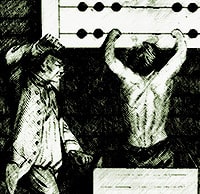
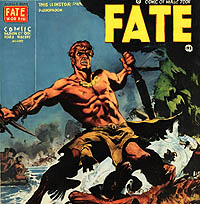


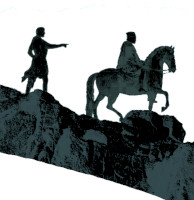
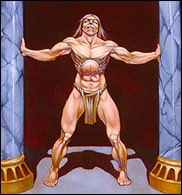
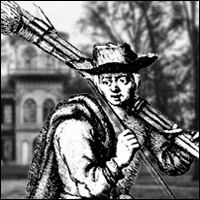


Great article. Scots beat the English at Stirling Bridge. Stamford Bridge was English beating the Vikings.
thanks.
"The most effective formations of polearm infantry of the early modern period, were the Swedes and German Lance-slaves, in the 30 Years War [1618-48], in which musketeers, pikemen, horsemen and light artillery worked in a brutal asymmetry."
What about the Spanish Tercios from the period?
The terico was the best, but was a mixed weapons array with the base infantry weapon the sword and shield. The Spaniards also did the best against indigenes. Yes, they had halbreds, pikes, crossbows, firearms so I would not class them as a predominantly one-weapon arm. there downfall is that they ad to be pro level men. The terico required a higher level of expertise and appealed less to the kings who wanted a simple two-dimensional point or shoot infantry that could be gleaned from the prisons and taverns.
Thanks, will use as a footnote, Bruno.